Many beautiful and unique birds live in Louisiana, although some move away for migration or breeding during certain times of the year. Other birds come into the state from elsewhere for the winter. However, many resident birds do not migrate out of Louisiana in the winter. These birds that winter in Louisiana are very abundant for the most avid bird watchers. More birds can be found in the state during the winter than at any other time. Discover the non-migratory birds that spend winter in Louisiana and where you can find them the next time you visit the Bayou State.
1. Brown Pelican
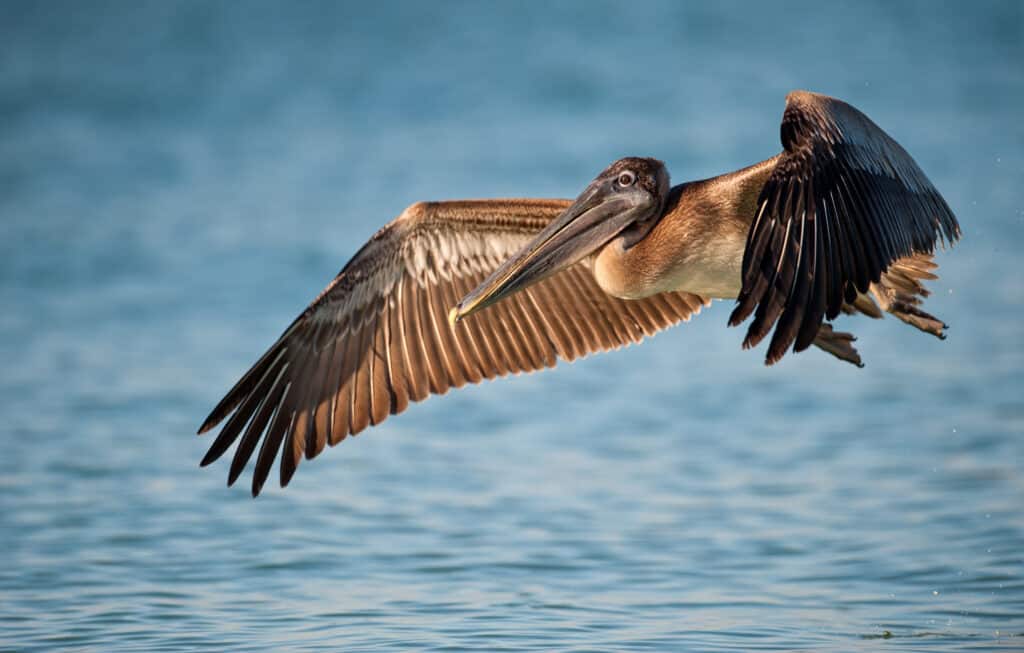
At one point, brown pelicans were on the verge of extinction, but now can be seen in abundance on Louisiana coasts in the winter.
©Nagel Photography/Shutterstock.com
The state bird of Louisiana is the brown pelican (Pelecanus occidentalis). With an oversized bill and a long neck, these pelicans live along the southern Gulf coast. Brown pelicans catch fish by diving down into the water from up high and stun their prey before scooping them into their bills. They must twist their bodies and necks to prevent injury to their trachea when they hit the water.
Some flocks of this bird move to warmer waters for the winter, but they are usually widespread in Louisiana in the winter. Brown pelicans spend winter along the Gulf Coast in Louisiana. You can find them in the water by waiting for loud splashes. As they resurface, these birds drain the water from their bills.
2. Great Blue Heron
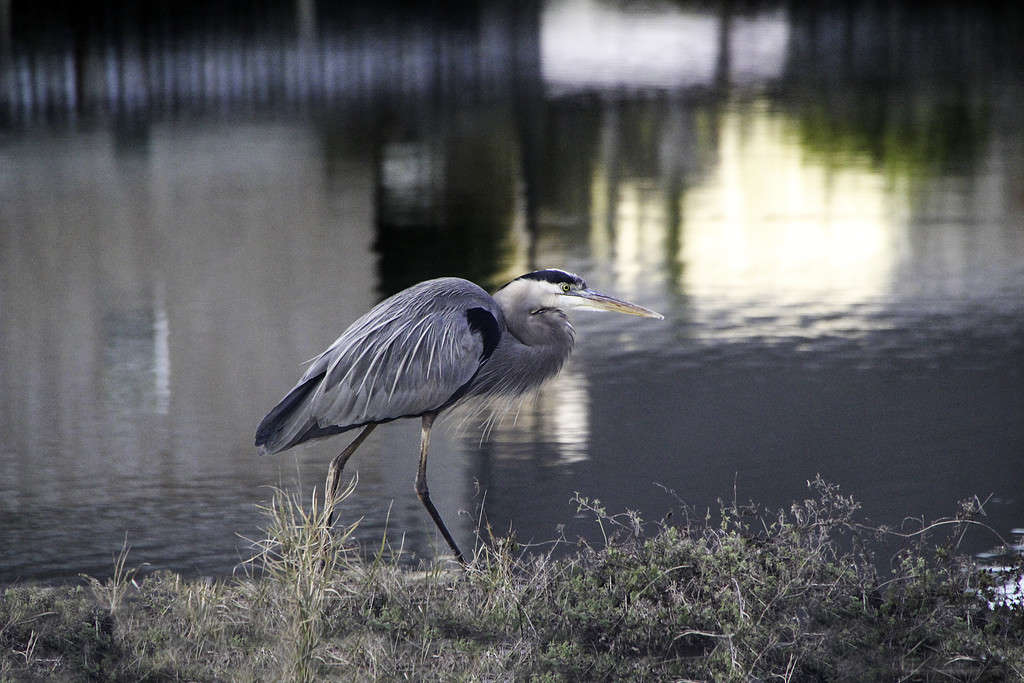
Although the great blue heron commonly migrates in colder parts of North America, it stays year-round in Louisiana.
©Jill Meyer Millet/ via Getty Images
Great blue herons (Ardea herodias) have a wide distribution across North America and spend all year in Louisiana in any wet area. They stand four feet tall and have an incredible seven-foot wingspan, which makes them the largest North American heron and the largest heron in Louisiana. These large waterbirds can eat huge fish, with some observed eating catfish larger than one pound. Their distinct, deep, hoarse cry bounces around quiet wetlands in the winter.
In the winter, great blue herons survive on a variety of food thanks to their adaptable diets. For anyone looking to catch sight of these birds, check along shorelines, river banks, and the edges of marshy land. They are tall and slow-moving, which makes them easy to spot.
3. Northern Cardinal

Homeowners in Louisiana can attract northern cardinals to their yards with bird baths.
©peter weiler/Shutterstock.com
A common sight across the United States, Northern cardinals (Cardinalis cardinalis), especially the males, display a bright, distinct shade of red. Although the females are not as flashy, they still have a distinctive crest on their heads and red accents on their feathers. Northern cardinals have a sweet song, with both males and females sharing their musical calls.
Northern cardinals are year-round residents of many states, including Louisiana. In the winter, you can more easily see the bright red feathers amidst barer trees and brush. They forage for nuts, seeds, and wild berries, so you can attract them by planting native bushes or leaving out their favorite seeds.
4. Great Egret
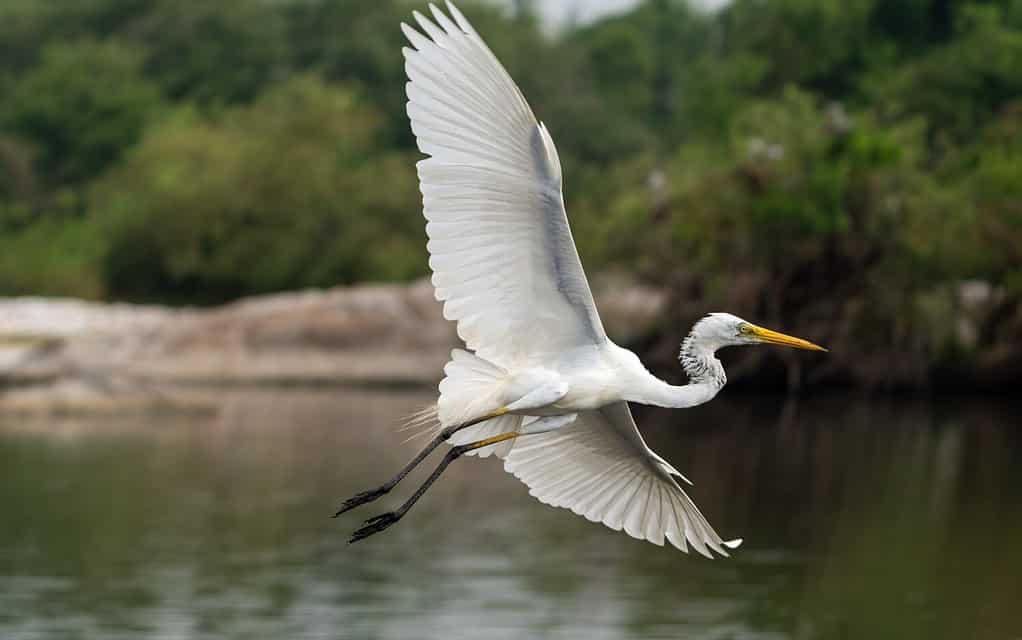
With their long necks and beautiful white color, great egrets were admired and hunted for their feathers.
©Banu R/Shutterstock.com
Great egrets (Ardea alba) can be found on every continent except for Antarctica. They outnumber great blue herons in Louisiana in many of their shared territories. Although they have a wingspan longer than two feet, they only weigh around two pounds. Watch for their unique hunting posture, where they lean forward while perfectly still and extend their necks to catch food.
During winter, great egrets take advantage of the rice-crawfish production standard throughout Louisiana. They are familiar sights for the casual bird watcher, especially around ponds and coastal marshes.
5. Blue Jay
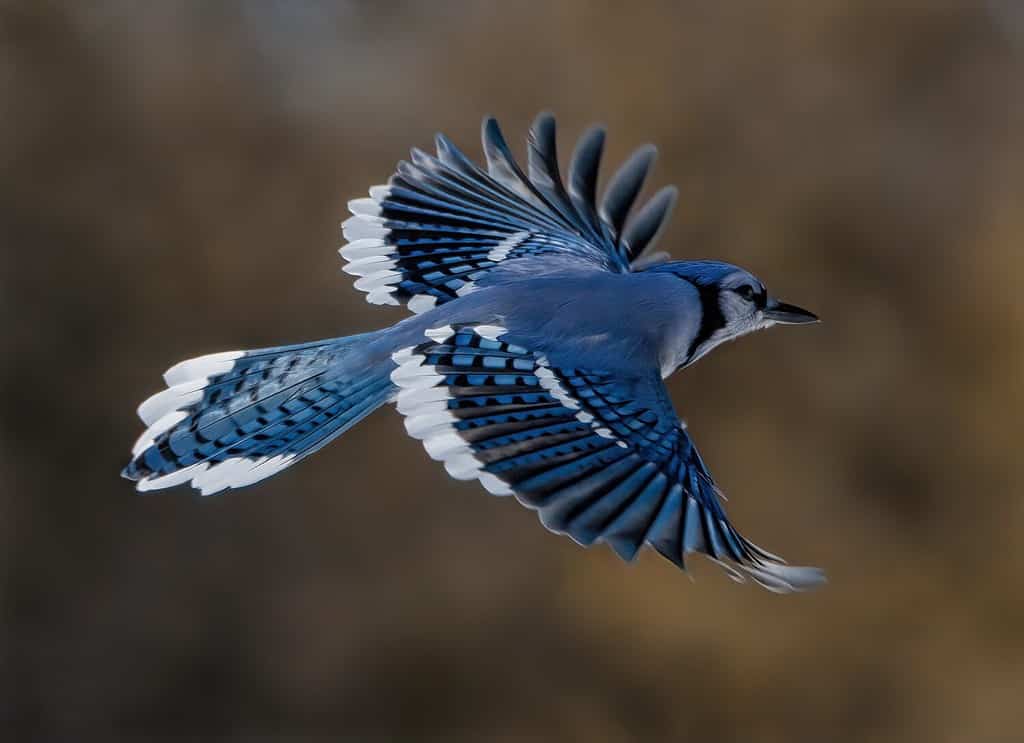
Blue jays have always been plentiful in Louisiana and were described as a nuisance to farmers by ornithologists in the late 19th century.
©Fiona M. Donnelly/Shutterstock.com
A large songbird with a tall crest, the blue jay (Cyanocitta cristata), can be distinguished thanks to its blue, white, and black feathers. The black parts of their faces and throats vary in pattern, which might make them recognizable to each other. They are a very social, intelligent bird that perhaps helped spread oak trees after the last ice age.
During the winter, blue jays hang out around bird feeders. To see blue jays around the state, pay attention near shorelines to loose flocks of birds with rounded wings and white bellies. Planting oak trees in your backyard space will attract them once they begin to produce acorns.
6. Red-Tailed Hawk
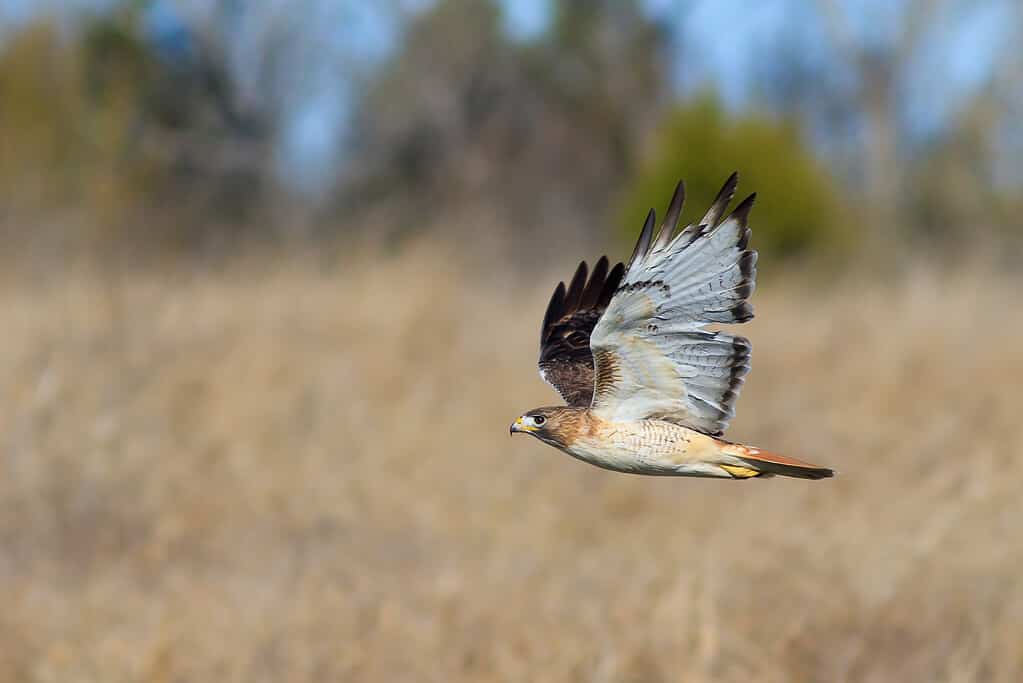
Red-tailed hawks can be distinguished from other hawks in Louisiana by looking for their distinct red tail, especially in flight.
©iStock.com/cmcneill17
The distinctly-marked red-tailed hawk (Buteo jamaicensis) spends all year in Louisiana. They are the most common birds of prey to live in Louisiana, which means bird watchers are likely to see them around. Their red tail feathers and broad, rounded wings can be distinctive markers as they fly in open fields around Louisiana.
During the winter, look out for red-tailed hawks on your next drive. These are not the type of birds to hang out at the bird feeder, but they can be seen sitting on fence posts. In most states, during the winter, they become more numerous, with more migratory birds to hunt.
7. Seaside Sparrow
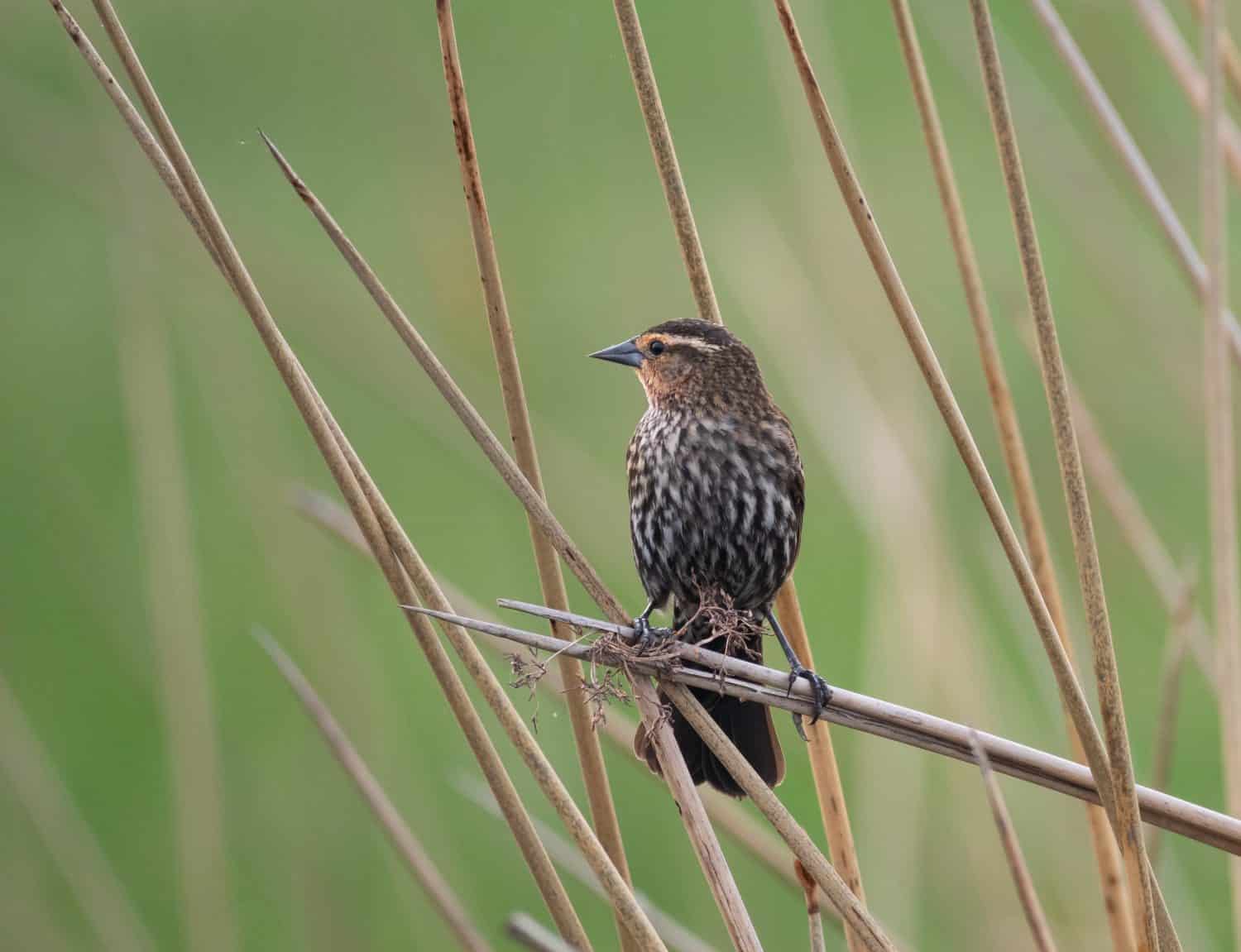
The Louisiana seaside sparrow is a subspecies that lives entirely in brackish marshes along the northern Gulf of Mexico.
©Teresa Otto/Shutterstock.com
Seaside sparrows (Ammospiza maritima) get their name thanks to their favorite habitat. Avid ornithologists often find them in salt marshes, where they forage among the mud and marsh grass. They are not widespread throughout Louisiana but stick mainly to the coastal areas. They are tiny brown birds with distinct yellow eyestripes as adults.
In the winter, they stick to the salty water along the coast. Although remotely distributed, the seaside sparrow in Louisiana is one of the most common sparrows to see in the winter. Because they are ground foragers, check the lower area of marshland for them. They might be perched on tall grasses briefly.
8. Eastern Bluebird

Louisiana residents looking to help Eastern bluebirds get through the winter can plant native berry bushes.
©Steve Byland/Shutterstock.com
The mixture of bright blue and red-brown on the feathers of the Eastern bluebird (Sialia sialis) male quickly catches the eye. They frequently spend time in areas with patchy vegetation, like meadows and golf courses, where you can spot their fluttering wings as they dive to catch insects.
Eastern bluebirds spend winter in Louisiana, although some who breed in the north might migrate south. Native trees and shrubs with berries will attract Eastern bluebirds to your yard. They remain abundant wherever there are plenty of insects and berries to forage.
9. Common Yellowthroat
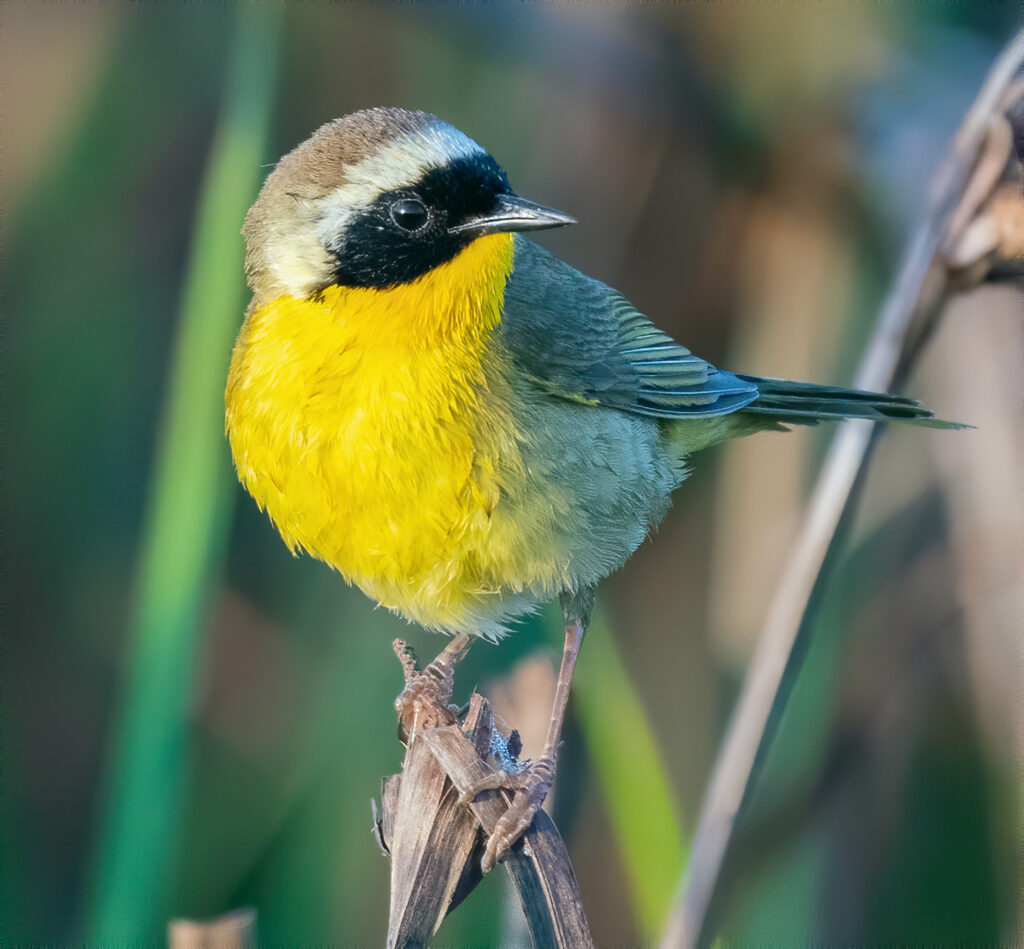
Common yellowthroats frequently spend the winter in the marshes of Louisiana.
©DC Wildlife Photography/Shutterstock.com
A tiny and distinctly-colored bird, common yellowthroats (Geothylpis trichas), can be marked by the black mask that covers the eyes of adult males. Their yellow and olive-green bodies are also readily seen in the dense weeds of the wetlands that they live in. Although common throughout Louisiana, they are year-round residents of the more southern parts of the state.
Look for common yellowthroats in the Louisiana marshland or any wooded area during the winter. Attract them to your yard with dried insects near a brush pile. Their breeding season is in the spring and summer, which means the most common sound to hear from them in winter is a “chuck” call to warn others about predators nearby.
10. Carolina Wren
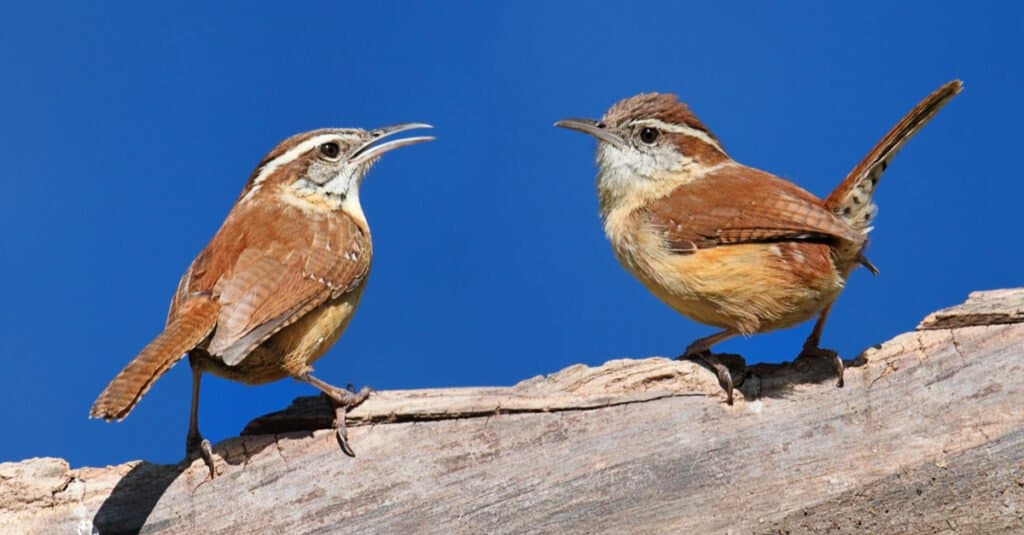
As long as they have plenty of food, Carolina wrens occupy Louisiana in abundance during the winter months.
©Steve Byland/Shutterstock.com
A tiny bird with a piercing “teakettle-teakettle” call, you can pick out the Carolina wren (Thryothorus ludovicianus) by its cinnamon brown feathers and uplifted tail. They are very hardy birds, and over the years, fewer have traveled south to winter. In Louisiana, mild temperatures in the winter mean that they have always been non-migratory.
These are birds that winter in Louisiana and other southern states. Throughout winter, you can continue to see Carolina wrens breeding and playing. With enough food, they remain active and visible to even casual bird watchers. Keep your ears alert for the male’s song coming from woody areas.
11. American Crow
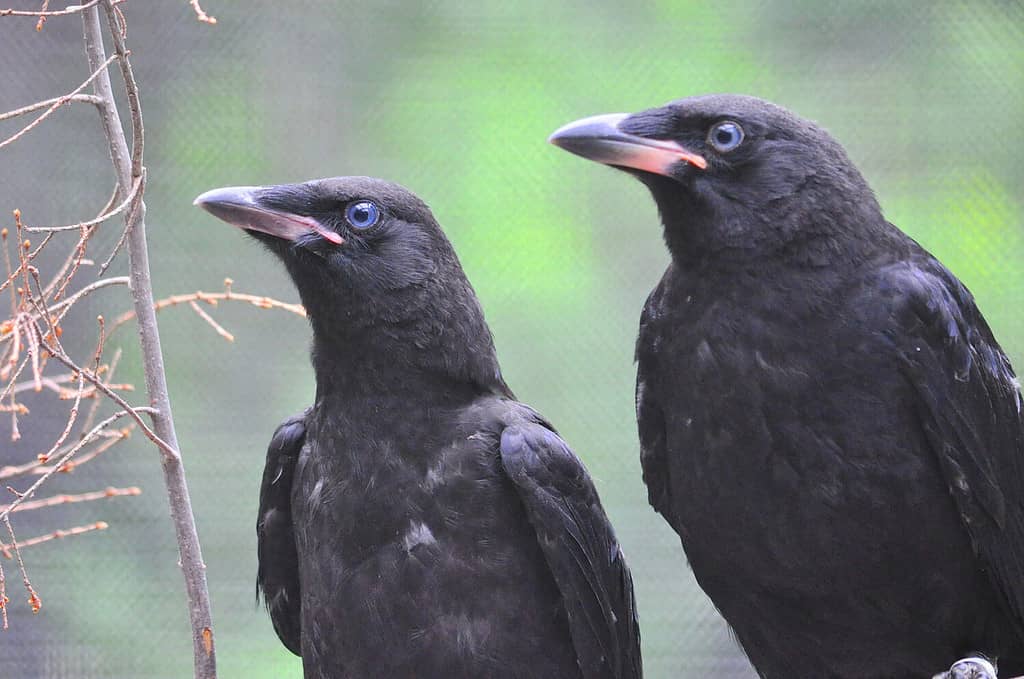
American crows in Louisiana do not migrate anywhere in the winter but may roost together by the thousands at night.
©Elizabeth Caron/Shutterstock.com
The iconic American crow (Corvus brachyrhynchos) has a distinct look that most Americans cannot mistake. You sometimes hear their hoarse, cawing voice long before you see their large, all-black body. The American crow lives throughout the United States and is a year-round resident of Louisiana. A unique habit of American crows is how they will spend part of their day roosting with their families and the other part foraging in farm fields for waste grain.
Keep your eyes out for these birds just about anywhere and everywhere in Louisiana. They are incredibly adaptable in habitat and diet, as well as being highly intelligent. American crows begin to nest in late winter in Louisiana. By February, you might see them going about the business of building nests in all types of trees using twigs, feathers, and grass.
Summary of the 11 Birds That Spend Their Winters in Louisiana
| Ranking | Bird Name |
|---|---|
| #1 | Brown Pelican |
| #2 | Great Blue Heron |
| #3 | Northern Cardinal |
| #4 | Great Egret |
| #5 | Blue Jay |
| #6 | Red-Tailed Hawk |
| #7 | Seaside Sparrow |
| #8 | Eastern Bluebird |
| #9 | Common Yellowthroat |
| #10 | Carolina Wren |
| #11 | American Crow |
The photo featured at the top of this post is © Daniel Ray Photography/Shutterstock.com
Thank you for reading! Have some feedback for us? Contact the AZ Animals editorial team.







